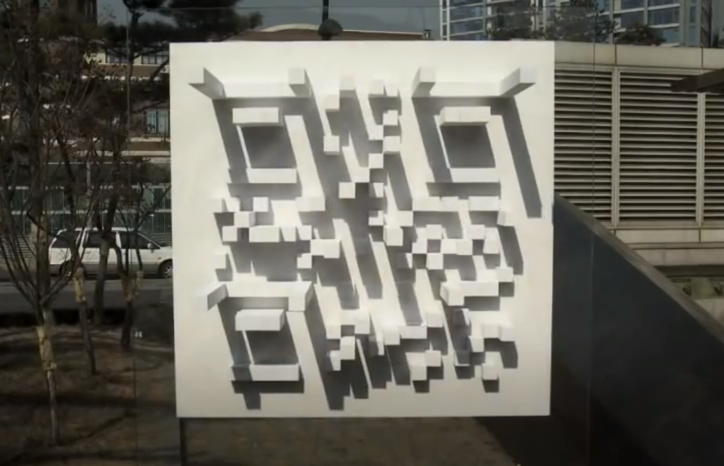Way To Apply QR Codes Marketing Campaign For Direct Mail

In today’s marketing, QR codes are making a comeback. Consumers are more inclined to use a QR code now that they can scan it directly from their smartphone camera, eliminating the need for additional apps. QR codes are a useful tool for combining print and digital marketing efforts, and they’re now a typical feature of successful campaigns. But what exactly are QR codes, how do they function, and how can you use them to your advantage? Let’s get started.
What is a QR code, and how does it work?
To grasp how a QR code might help your print campaign, you must first grasp the fundamentals.
Take a look at the illustration above. See the black and white square on the card’s left side, which is filled with smaller squares, dots, and lines? The QR code is a one-of-a-kind barcode that goes to a pre-determined URL. To get there, all one has to do is use their smartphone’s camera to scan the QR code. You can use the QR code to drive people to your website, coupons, or a personalized URL, as well as to initiate a phone call, email, or other contact method (more on all of those later).
The simplicity of QR codes is what makes them so appealing. While manually typing a URL isn’t onerous, it is an extra step that some customers may not want to take on their own. By making the digital component of your print campaign easily accessible, you increase the likelihood that someone will complete it. And what’s even better? You may keep track of those follow-ups to learn more about your response and conversion rates.
Okay, but how does a QR code operate in practice?
QR codes aren’t science fiction, despite the fact that they can transform a bunch of markings into something as obvious and identifiable as a URL. QR codes work similarly to regular bar codes used in stores such as the grocery store, however instead of translating to a price, they convert to a webpage.
The language of the URL is buried in data encoded on the image of the QR code, which a smartphone can interpret as binary, alphanumerical, numerical, or in Kanji (a Japanese writing system formed of Chinese characters). When a smartphone scans those squares, dots, and lines together, they simply transform into plain English—a process that takes less than a second.
Don’t worry if you’re having trouble understanding the technical description of what a QR code is. For our needs, knowing that QR codes provide a straightforward mechanism to move leads from print to digital material and that they are intrinsically adaptable and trackable is sufficient.
What is the best way to use a QR code in a marketing campaign?
QR codes are simple to include in printed items and can guide people to a range of actions and sites.
Here are just a few examples of how a QR code might help your marketing efforts:
- Use a customised URL to direct someone to your website or a specific landing page.
- Bring someone to a sale and/or a coupon.
- Visit one of your company’s social media profiles with someone.
- Pick up the phone and dial a number.
- Send an email or a text message.
- Put your company’s location on a map online.
- Take a friend to a movie.
- Show your résumé or portfolio to someone.
It’s entirely up to you where your QR code leads. Typically, you’ll want to select a location that complements your campaign’s setting as well as the print material itself. If we print your QR code on a business card, for example, you may want it to direct to a general place, such as your website, portfolio, or office address on a map.
The destination of a QR code on a piece of promotional direct mail could be a coupon or a customised URL. You may also use QR codes to link to your entire product line or a discount voucher for a future transaction.
There are few limitations to how inventive you may be with QR codes, but there are some principles to follow.
Make sure it’s the proper size. Your QR code shouldn’t too big or too small on the page (though, thanks to something called Reed-Solomon correction codes, smartphone cameras can filter out some erroneous symbols to read the correct code—just make sure your code works on your end first).
Provide direction to your viewers. Educate others on how to use the code and why they should. You don’t have to go into great detail on the topic, but QR codes aren’t as common in the United States as they are in other countries, so your audience may require some explanation. “Scan this code to get your 10% off coupon,” for example, should enough.
Make sure your destination page is mobile-friendly. You don’t want someone to scan the code and then leave the location before they’ve finished.
Personalized URLs and QR Codes
One of the most useful functions of a QR code is that we can use it to connect leads to personalized, trackable URLs.
So, what exactly is a customized URL? A personalized URL, sometimes abbreviated as PURL, is a one-of-a-kind web address developed for a certain lead. For example, if your lead’s name is “Jane Doe,” the PURL you establish would be “yourwebsite.com/Jane.Doe.” Jane will be taken to a page developed particularly for her when she scans the QR code, which you can track. In addition to knowing when Jane views the page, you can track her behavior once she arrives and utilize the information you gather to sell to her specific requirements.
Visit the link to learn more about the best ways to include a PURL into your campaign.








